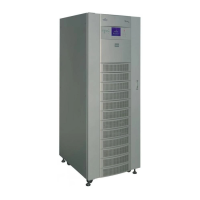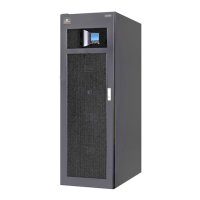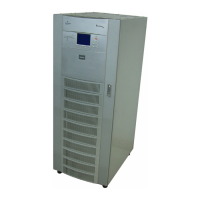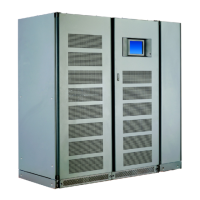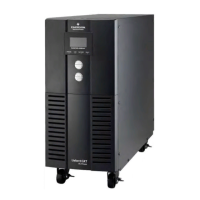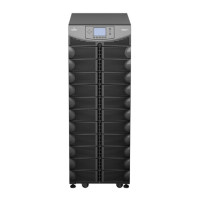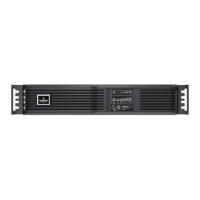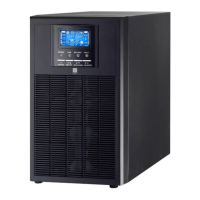Battery Installation
17
2.3 Battery Cabinet
2.3.1 Introduction
This cabinet can also be used in conjunction additional cabinets, to provide the necessary accommoda-
tion required by the larger cells associated with system’s having a long autonomy time.
Where two (or more) cabinets are used they are positioned alongside each other and secured and
bonded together. If the cabinet(s) is located immediately adjacent to the main UPS equipment the two
units are bolted together.
2.3.2 Temperature Considerations
Valve-regulated, lead acid battery cells are sensitive to ambient temperature and should be operated
between 15°C and 25°C (59-77°F). Battery capacity is increased by 1% for every 1°C (2°F) increase in
temperature up to 25°C (77°F). Battery life is reduced at temperatures above 25°C (77°F).
When batteries are mounted in the same room as the UPS unit, it is the battery that dictates the
designed maximum ambient temperature, not the UPS. — i.e. in the case of valve-regulated cells, the
ambient room temperature should be kept between 15°C and 25°C (59-77°F), and not between 0°C
and 40°C (32-104°F) (which is the specified main equipment operating temperature range). Tempera-
ture deviations are permissible for short periods, provided the average temperature does not exceed
25°C (77°F).
!
WARNING
Hazardous battery voltage present behind covers
No user-serviceable parts are located behind covers that require a tool for their removal. Only
qualified service personnel are authorised to remove such covers.
The internal batteries are always connected through power fuses to the UPS and segregated
terminal bars are available for connection to an external battery.
Isolate any internal battery connections before attempting to access the segregated terminal
bars available for connection to an external battery.
The following general battery safety precautions and warnings should be observed at all
times:
• A battery can present risk of electric shock or burn from high- short-circuit currents.
• The full nominal string voltage, when the battery blocks are interconnected, is 480VDC,
which is hazardous
• Only qualified personnel should install or service batteries.
• Eye protection should be worn to prevent injury from electrical arcs.
• Remove rings, watches, necklaces, bracelets and all other metal objects.
• Use only tools with insulated handles.
• Wear rubber gloves and a rubber apron when handling batteries.
• If a battery leaks electrolyte or is otherwise damaged, it should be placed in a container
resistant to sulfuric acid and disposed of in accordance with local regulations.
• If electrolyte comes into contact with the skin the affected area should be washed immedi-
ately with plenty of clean water.
• Batteries must always be disposed of according to local environmental laws.
• When replacing batteries, use the same number and type that were originally fitted.
• Disconnect charging source before connecting or disconnecting battery terminals.
• Determine whether the battery is inadvertently grounded. If it is inadvertently grounded,
remove the source of the ground. Contact with any part of a grounded battery can result in
electrical shock.
